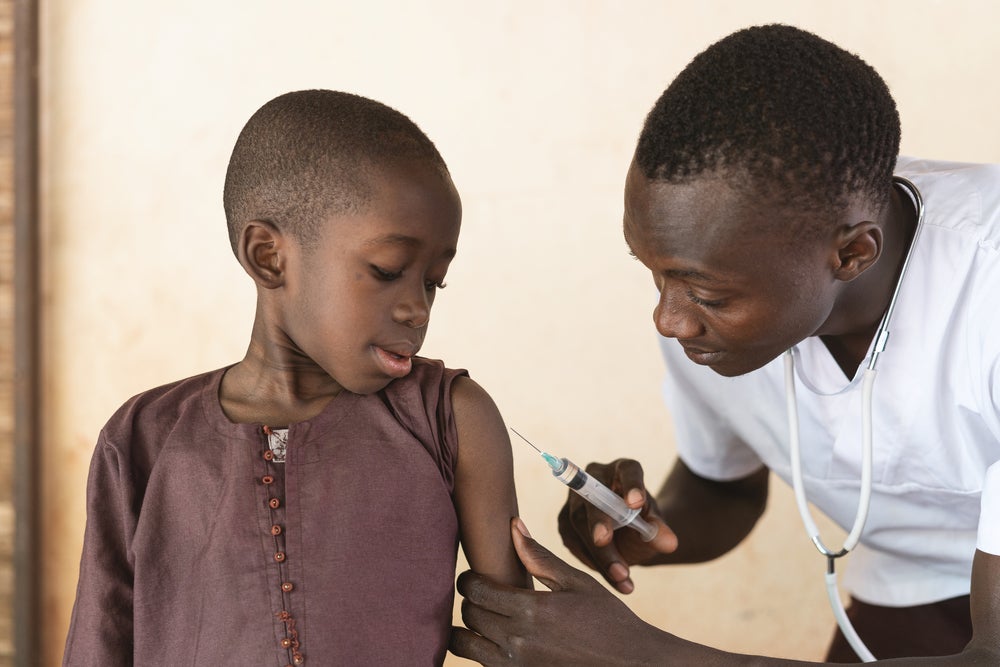
The World Health Organisation (WHO) has recommended a new malaria vaccine for children with scalable manufacturing capabilities to combat the increasing disease burden.
The R21/Matrix-M vaccine, developed by the University of Oxford and Serum Institute of India, joins GSK’s RTS,S/AS01 vaccine as the only two malaria vaccines endorsed by WHO. The four-dose R21 vaccine contains Novavax’s Matrix-M saponin-based adjuvant. The adjuvant makes the vaccine more potent and durable by enhancing the immune response.
The R21 vaccine will also be cheaper. It costs $2-$4 per dose, which means it could be approximately half the price of RTS,S.
The WHO stated that limited manufacturing of GSK’s RTS,S means malaria vaccine demand currently exceeds supply. In July, the WHO expanded the Malaria Vaccination Implementation Programme to include allow supply of the GSK vaccine to certain African countries. At that time, GlobalData epidemiologist Anna Moody said: “As with many new vaccines, the supply of the malaria vaccine is limited while production attempts to keep up with demand. The WHO estimates that 40–60 million doses of the RTS,S vaccine will be needed across the countries included in the Malaria Vaccination Implementation Programme by 2026, and that this will grow by 80–100 million doses each year by 2030.
“Over the next few years, the supply of the RTS,S malaria vaccine will be insufficient to meet the needs of over 25 million children born each year in areas where the vaccine is recommended, according to a WHO-commissioned global market study.”
The addition of low-dose malaria vaccine R21, which WHO says performs similarly to RTS,S, will supplement the vaccine supply for children at risk of contracting malaria since it can be manufactured at mass scale.

US Tariffs are shifting - will you react or anticipate?
Don’t let policy changes catch you off guard. Stay proactive with real-time data and expert analysis.
By GlobalDataWHO Director-General Dr Tedros Adhanom Ghebreyesus, said: “Demand for the RTS,S vaccine far exceeds supply, so this second vaccine is a vital additional tool to protect more children faster, and to bring us closer to our vision of a malaria-free future.”
When given just before a high transmission season, the R21 vaccine can reduce symptomatic cases of malaria by 75% during the first 12 months after a three-dose regimen. WHO says this is similar to RTS,S’ efficacy when given seasonally.
In an age-based schedule, the vaccine demonstrated 66% efficacy during the first 12 months following the first three doses. A fourth dose in both studies maintained efficacy.
At least 28 countries in Africa plan to introduce either R21 or RTS,S as part of national immunisation programmes. The choice of vaccine depends on programme characteristics, and vaccine supply and affordability. The RTS,S vaccine is expected to roll out in countries in early 2024, whereas the R21 vaccine will be available in mid-2024.
In April 2023, Ghana became the first country to approve the R21 vaccine.



